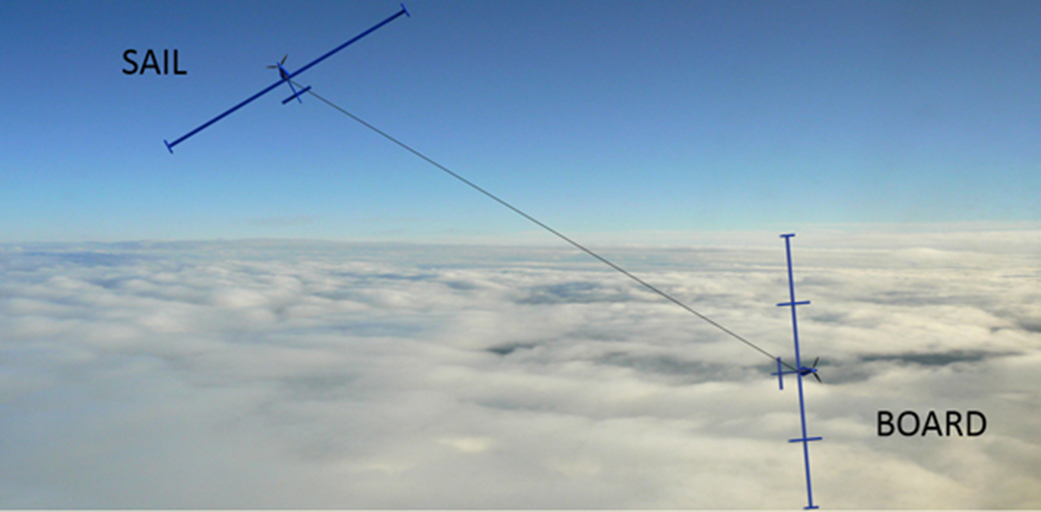William Engblom
Embry-Riddle Aeronautical University
Phase II Overview
Description
The Dual-Aircraft Platform (DAP) is a patented concept for achieving a low-cost atmospheric satellite which utilizes wind shear as the primary energy source, and has the potential to stationkeep without a substantial energy storage system. DAP consists of two glider-like Unmanned Aerial Vehicles (UAVs) connected via a thin, ultra-strong cable which literally sails without propulsion, using levels of wind shear commonly found in lower Stratosphere (e.g., near 60,000-ft). The two aircraft are positioned at different altitudes, as far as 3,000-ft apart, to encounter substantially different wind velocities. The device operates similar in principle to a kite-surfer in which the upper aircraft, referred to as the SAIL, provides lift for both aircraft and aerodynamic thrust, while the lower aircraft, known as the BOARD, provides an upwind force to keep the platform from drifting downwind. Each aircraft extracts additional energy via solar film and possibly a wind turbine to operate the avionics, flight controls, payload, and for intermittent use of propulsion.
The DAP concept is expected to provide substantially larger levels of power to onboard payloads, compared to conventional solar aircraft. Consequently, the primary objective of the proposed work is to directly compare the performance of a conventional solar aircraft with the DAP for a 3-month mission as a communications relay, remaining within 150-miles of Orlando, at an altitude of 50,000-60,000-ft, using physics-based flight dynamics simulations. A related objective is to evaluate new flight operations and controls strategies that may lead to improved DAP performance in these simulations. NASA KSC’s Doppler radar (5-min intervals), radiosonde data, and a gust model, will be used to construct realistic time-varying atmospheric profiles for use in the flight simulations.
Aircraft platforms which could stationkeep in the stratosphere for years, referred to as atmospheric satellites, represent a long-standing, grand challenge to the aeronautics community, and have enormous potential societal and economic impact. Such platforms would diversify and expand surveillance capabilities (e.g., NASA’s earth science missions) and communications bandwidth and availability (e.g., for underserved remote areas of the US), at a fraction of the cost of orbital satellite networks. Constellations of such platforms could also potentially be integrated into the NAS to facilitate inter-aircraft communications or to support aircraft navigation and surveillance.































